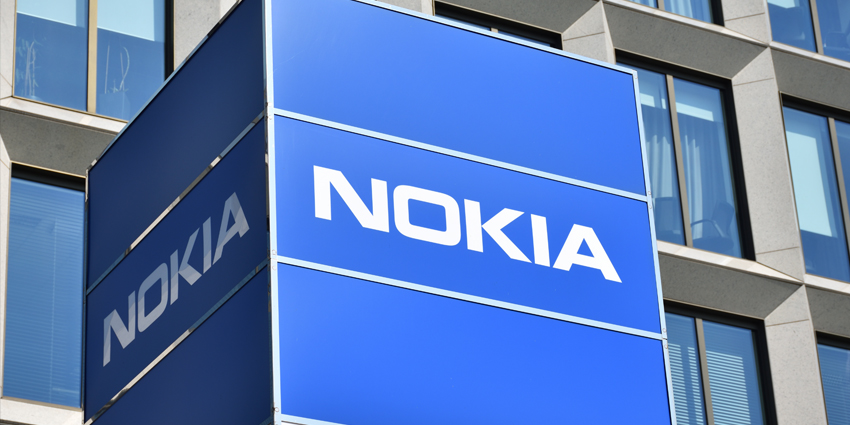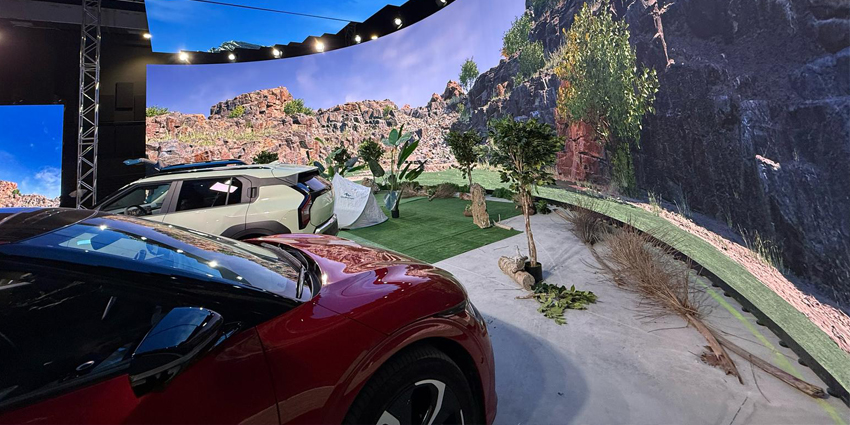Innovation is a central component of the extended reality (XR) industry, and global tech firms rely on fresh solutions and approaches. This keeps their products both competitive and functional for enterprise users, leading to greater performance metrics and outcomes.
These next-generational tools aim to tackle some of the most salient challenges across verticals. Manufacturers, first responders, retailers, and educators employ XR hardware and software to create positive impacts for users and their clients.
For our XR Today round table, we are pleased to welcome:
- Paul Travers, Chief Executive Officer, Vuzix
- Kirk McKinzie, President, McKinzie Smart Technologies LLC
- Kevin Sofen, Director of Innovation, WS Darley & Company
- Lorne Fade, Co-Founder and Chief Operating Officer, VR Vision
The four industry experts spoke to XR Today about their respective companies and approaches to innovation, their views on the future of the Metaverse, and the problems their firms aim to overcome with the power of immersive technologies.
XR Today: Can you tell us how your XR innovations are advancing use cases for consumers and enterprises?
Paul Travers: Diving deeper, there are several across various global industries that Vuzix smart glasses handle extraordinarily well.
In warehousing and logistics, numerous clients are using Vuzix to solve supply chain challenges. We provide workers with access to backend systems so that counts are always correct, and inventory management information is shared in real-time with the people who need it most.
With the glasses, workers are not only told what to pick, but also where to find the items, how to convey them, and even how to palletize them. This saves time and prevents costly returns due to damaged or incorrectly picked items.
Field service is another huge use case. In many industries, technicians are dispatched and forced to rely on physical documentation or a phone or tablet for instructions. Aside from not having enough hands to hold a phone and perform their work, field workers often need to call remote experts to complete a job.

With smart glasses, remote experts get a see-what-I-see view of the work, providing step-by-step oversight through Zoom, MS Teams or another common application, and then are free to move on with their day. Field service teams are saving manpower and costly return trips to a job site because, with smart glasses, everyone can be an expert.
The third major use case encompasses a variety of applications in the medical field. First responders can now share live video with Intensive Care Unit (ICU) staff to prep the attending physician, who can then evaluate the patient’s condition and provide care instructions before the patient is in the hospital.
In the operating theater, surgeons with smart glasses can collaborate with offsite specialists to share their views while operating. This also makes surgical training safer and more effective for all parties.
There’s also AR-guided surgery, where our friends from Pixee and NextAR from Medacta lead the charge. Now, complicated joint surgeries are being augmented with Vuzix smart glasses to help guide surgeons and dramatically increase patient outcomes.
Kirk McKinzie and Kevin Sofen: Our XR innovations are advancing in the public safety and first response domains. In this case, the consumers and enterprises are citizens (+/- 328 million in the US and 8 billion worldwide) and first responders seeking modernized approaches to emergency response.
These “consumers and enterprise teams” in the genre use systems of systems to provide value with XR via phones, tablets, computers, heads-up displays (HUD) systems, or holography. Use cases include Public Education and awareness, First Responder Pre and Post Traumatic Stress Insult, First Responder training, and Post Incident Analysis (PIA).
Including XR technology within public safety for training enables first responders to reduce costs, engage the digital-native generation, focus on soft skills and offer ongoing training sets and reps.
Some teams have begun the process of integrating XR for Recruitment and Retention of new staff for Diversity, Equity, and Inclusion (DE&I) training, employee counseling, conflict resolution, traumatic stress exposure strategies, and at the time of intervention, to improve Command and Control of operations (C2). At all levels of government, local, regional, state, and federal institutions teams are considering the implications and benefits of XR.
As external environments continue evolving, training as frequently as possible is critical. The traditional hands-on training methods are still 100 percent needed, but traditional training takes time and resources to coordinate while adding cost and physical risk to personnel. XR technology allows fire departments to train during blue sky days to receive ongoing refresher courses for specific job tasks.
Many community colleges use XR to prepare students for hands-on instruction, ensuring that in-person training is highly effective. Many departments now use VR as a recruitment tool to reach a wider audience and inspire future fire service members. Using XR technology can help address the significant staffing challenges across public safety, especially within rural and volunteer fire services.

Lorne Fade: At VR Vision, we are pushing the envelope with multiplayer enterprise training by launching a platform for the instructor experience to facilitate the management and administration of VR teaching applications at scale.
Our Vision Portal platform will launch in January 2023 and allow instructors to manage courses and learners, push updates, and view a live stream casting of in-headset viewpoints to provide real-time support to VR simulations. The portal will also allow remote multiplayer administration — something that is missing from the sector regarding scaling VR training amongst enterprise organizations.
XR Today: Why is innovation critical for your target sectors? What is the key problem to solve in your respective fields?
Paul Travers: It is not easy to design lightweight, all-day wearable smart glasses that are fashion-forward. From the waveguides built into the glasses frames to the display engines that produce the images, these are all very difficult to execute, but it is Vuzix’s speciality. We design and manufacture waveguides right here in Rochester, New York.
When it comes to smart glasses, there’s no “one key problem” to solve, because the technology is as versatile as a smartphone but more convenient for the workplace.
If there was a single problem to solve, it would be adoption at this point. Vuzix is solving the AR adoption problem by doing what we set out to do when I started this business: make sleek, sexy smart glasses that people actually want to wear.
Putting aside all the benefits of this technology, if it’s heavy or looks bad, it will never go mainstream. We are aware of this and plan to release products that answer this issue.
We are on the front lines of digitizing the workplace by making the connected workforce a reality. Supply chain issues have forced the hand of a lot of organizations, causing them to rethink not only the way employees share and utilize real-time data, but also their approach to customer service and training.
Smart glasses connect workers to systems and AI that makes them more effective – but they also connect workers to other human beings, facilitating collaboration through video and see-what-I-see sharing.
In an age where customers expect the highest service levels, our smart glasses enable technicians to solve issues in less time and money, thanks to less travel and fewer truck rolls and workers dispatched into the field.
Organizations are accelerating their onboarding time as well. Smart glasses enable new employees to follow step-by-step instructions, verify important protocols, and connect with an expert when necessary to go over training or processes.
Kirk McKinzie and Kevin Sofen: The target sector for our work and partners is SMART public safety and community risk reduction practitioners and those they serve.
The goal is to save some of the 6,000 lives lost per hour worldwide (7,000 in the US per day). Based on statistics published by The 9-1-1 National Emergency Number Association (NENA), there are 240 million annual 911 emergency calls in the US, or 650,000 calls per day, and there is an opportunity to save more lives.

Public Safety and emergency response communication systems primarily utilize legacy two-way voice land mobile radio and LTE-enabled mission critical Push to Talk (PTT) cell phones service. Providing effective emergency response across the United States on an all-voice system when the extended reality is being brought forth with gaming technology capabilities improves outcomes for many stakeholders.
Rather than two-way voice, XR provides current and near-term capabilities for Command, Control, Communication, Computers, Cyber-physical systems, Intelligence, Surveillance, and Reconnaissance (C5ISR), for an Ironman-like solution set.
Innovation for training and recruitment is not only critical, but it is also essential for the survival of public safety. Because training is expensive, hard to conduct, and dangerous, we need innovations like XR to empower first responders to do their job more effectively.
Due to the significant requirement gaps, XR is a tool that expands the public safety message’s reach to a broader audience cost-effectively and swiftly, producing high-efficacy education and objective learning retention.
There is a significant recruitment challenge across the fire service, especially on the volunteer side, how to reach more people and inspire the right people to join in different capacities. Many job functions within public safety can appeal to you, and XR tools allow prospective future professionals to consider the occupation.
Lorne Fade: Innovation will always be key to the success of enterprise training applications. We are looking to enhance learning outcomes and make it easier to onboard and upskill new and old employees alike, all while giving companies the ability to train their workforce remotely.
XR Today: What was the process of developing your solutions?
Paul Travers: Vuzix has been at this for quite some time, and most of the innovations have come out of the team here in Rochester. Rochester is an optics center for the world and the team here at Vuzix has learned how to build the glasses through years of experience. Vuzix has over 250 patents and patents pending that cover the optics of the engines to some of the use cases.
Vuzix is in the business of making AR smart glasses that are powerful, lightweight, and ergonomic: in a word, wearable. All of our development efforts, from our waveguide optics team performing magic with light that would be unheard of a few years ago, to engineers racking the code to make highly-efficient systems, to designers creating the sleekest possible form factor to accommodate heavy-duty processing power and battery needed to power the apps our glasses support – ensures that everything proceeds against the ultimate goal of creating solutions that people want to wear.
Because we’re dealing with cutting-edge technology, we’ve invested heavily in protecting our patent portfolio, which currently has over 250 optical system patents. Vuzix serves enterprise markets, but we know the value of our waveguide technology extends well into the broader consumer markets.
This is why we’ve invested in our original equipment (OEM) business, enabling some of the biggest consumer electronics brands to leverage our technology and bring smart glasses to the masses.
Kirk McKinzie and Kevin Sofen: Based on an initial background in three-dimensional technologies for forensic reconstruction, we had the opportunity to consider how the solution supports public education and First Responder training. Considerable research and scouting of solution sets in the XR domain were done over years with key leaders in the space beginning and the mid-2010s.

Many teams are building the systems with partner firms, including hhpBerlin, Qwake Technologies, the builders of C-Thru, Hexagon’s Leica Geo-systems – for reality capture, FLAIM Systems, WS Darley, the National Institute of Standards and Technology PSCR and AR cortex, RiVR.
The Cosumnes Fire Department shares successes on its website. Eventually, XR will likely empower incident commanders during the intervention.
Consider HOW you will integrate this technology and why that is important, and then communicate the value to get buy-in from a top-down perspective. Consider metrics to track, such as training scores, time to train, user feedback, and cost.
Axon solution specialist and former law enforcement officer Clint Collins agreed that adding VR and simulation technology training can lead to better outcomes than traditional training methods like classroom instruction and role-playing.
Collins recently explained traditional methods are time-consuming, limited, expensive, and unrealistic, but those trained using VR retain information better than those who don’t.
Maintaining constant engagement with the relevant institutional partners is imperative, and we are fortunate to work closely with the new research from the North American Fire Training Directors.
The Fire Protection Research Foundation (FPRF) along with North American Fire Training Directors (NAFTD) is also leading a detailed evaluation of XR for fire and rescue services.
The project is scheduled to be completed by August 2023 and funded by the Department of Homeland Security (DHS) and the Federal Emergency Management Association (FEMA) Assistance to Firefighters Grant (AFG) Program.
Lorne Fade: Our development process with all our clients has been iterative and requires a lot of back and forth to nail down specifics for development processes.
We develop our simulations in an ad-hoc manner so everything is custom-made with nothing “out of the box.” While this makes things harder in terms of development processes, the end result is a bespoke and much more effective outcome for learning objectives.
XR Today: Where do you see the Metaverse progressing amid the ongoing tech downturn? How can innovation help to turn around the global market?
Paul Travers: For Vuzix, the Metaverse has always been part of the internet. The difference today is that virtual worlds are being developed to open doors to almost anything imaginable in the virtual space and become interoperable from one to another.
Where it gets exciting and makes a difference in the real world is when data that sits in the Metaverse, or “cloud,” is literally connected to the real world.
Imagine seeing the progress of a building being built with the unfinished virtual parts visible in real-time, or walking through a plant floor with all the critical sensors on a piece of equipment highlighted and showing current conditions. This would allow a technician with little experience to fix the machine as if he were an expert. These applications are starting to drive the need for smart glasses in enterprises, and they will increasingly become a big part of growing productivity in the global markets.
Additionally, the current environment can’t do much to stop the advent of what people are calling the Metaverse. From our perspective, the Metaverse will continue to grow as a mixed or augmented reality experience. Using devices like AR smart glasses, people can improve or augment their life and work.
It’s not the huge splash of simulations or immersive tech that will power new trends, but rather the assistive aspect of the Metaverse that helps people interact with the world more efficiently with overlays and data. As people become familiar with overlayed information from the Metaverse, they’re coming to appreciate the huge benefit that smart glasses offer, which allows them to keep both hands free, and their eyes on the world, rather than juggling a phone and getting distracted.
This helps the global market with this new way of interacting with technology because people can accomplish tasks more quickly and effectively. We’re connecting people virtually, through the Metaverse, with each other and the information they need to be successful.
Kirk McKinzie and Kevin Sofen: There are countless opportunities within the XR space for unique value creation. If you focus on developing customers, then you have a fun option in front of you.
Regarding the ‘metaverse’, people always seek opportunities to interact with others. There will be a natural evolution of XR experiences that will allow people worldwide to connect. It may not be where we ‘thought’ it would be, but it will continue to become part of society in different ways, such as through entertainment, training, and real-time operations.
The .com bubble and subsequent slump was a significant and genuine era to evaluate while watching for hiccups and bumps in the modern age. Those who continued wisely and committed strategically with their assets and titrated growth could monopolize as the Internet and value across society became perpetually reaffirming. The same can be expected for long-term, chip-enabled market recovery.
Many teams have joined the Metaverse Standards Forum, led by NVIDIA and Cesium, with critical founding members. Now, more than 2,000 member teams, including some of the Tech Titans, are part of exploring the development of spatial computing with protected intellectual property (IP) and interoperable API compatibility strategies. This work and work on Capitol Hill from the XR Association sets the stage for long-term Metaverse-enabled success.
Innovation is poised to become a long-term investment in the global marketplace as web 3.0 and the further development of Industry 4.0 in the digital age.
Most in the field see the inevitable and ongoing benefit XR can provide humanity—with due regard for social, emotional, privacy, and security cautions—and the associated marketplace. For veteran leaders with decades of experience providing gaming-style fire and life safety solutions, in 3D are important to the industry’s success. In particular, hhpberlin has demonstrated mixed physics computational fluid dynamics for MR modeling of wildfires and continually advancing XR technologies.
Those who have begun the move from using just two-way communications are clear: the future of XR in the risk reduction and public safety space will remain an inspiring opportunity for generations to come.
Lorne Fade: We don’t like using the term ‘metaverse’ here at VR Vision. We prefer to focus on multiplayer VR, which enables users to interact and engage in VR environments and simulations at the same time. A lot of people are calling multiplayer VR the Metaverse, but the true metaverse, in our opinion, will take place when we are plugged into web3 applications similar to Ready Player One.
VR continues to grow and evolve as headsets get smaller and faster and adoption increases, with more companies seeing positive returns on investment (ROIs) from applications.







